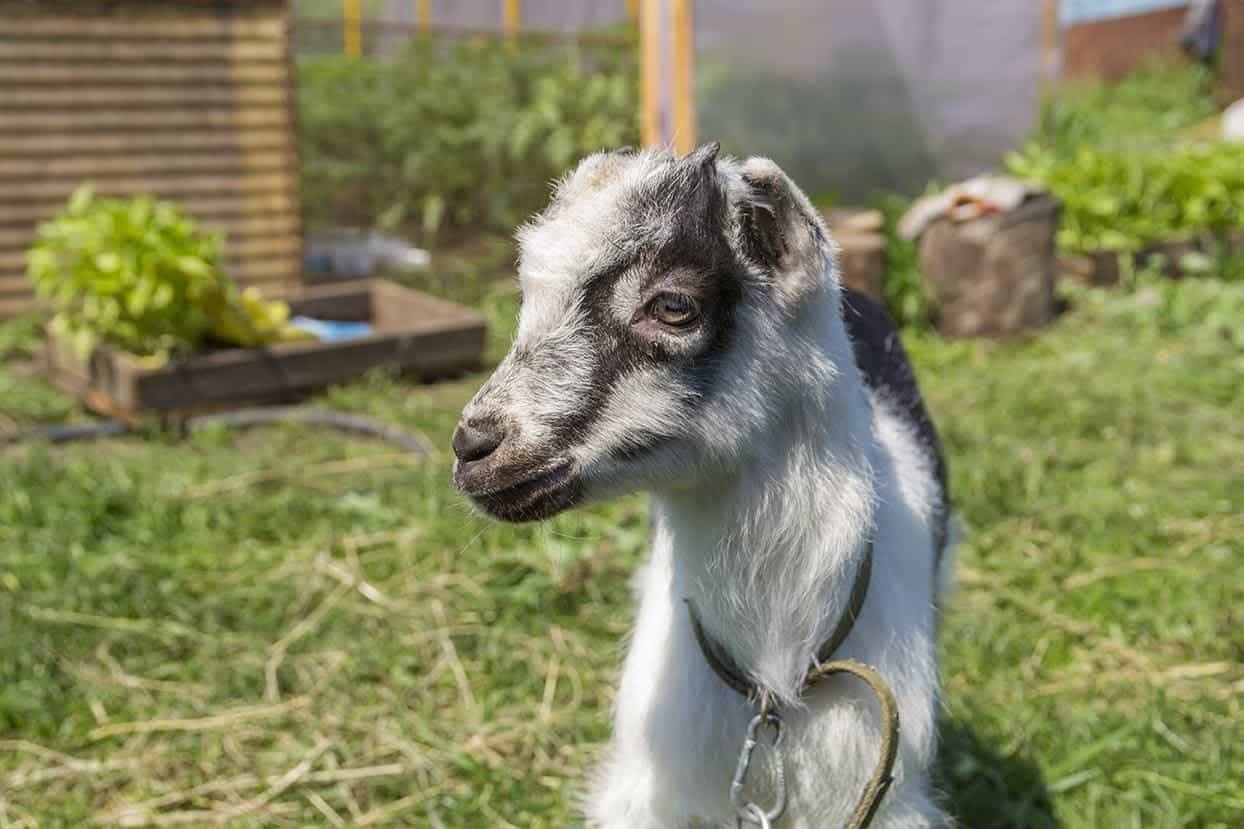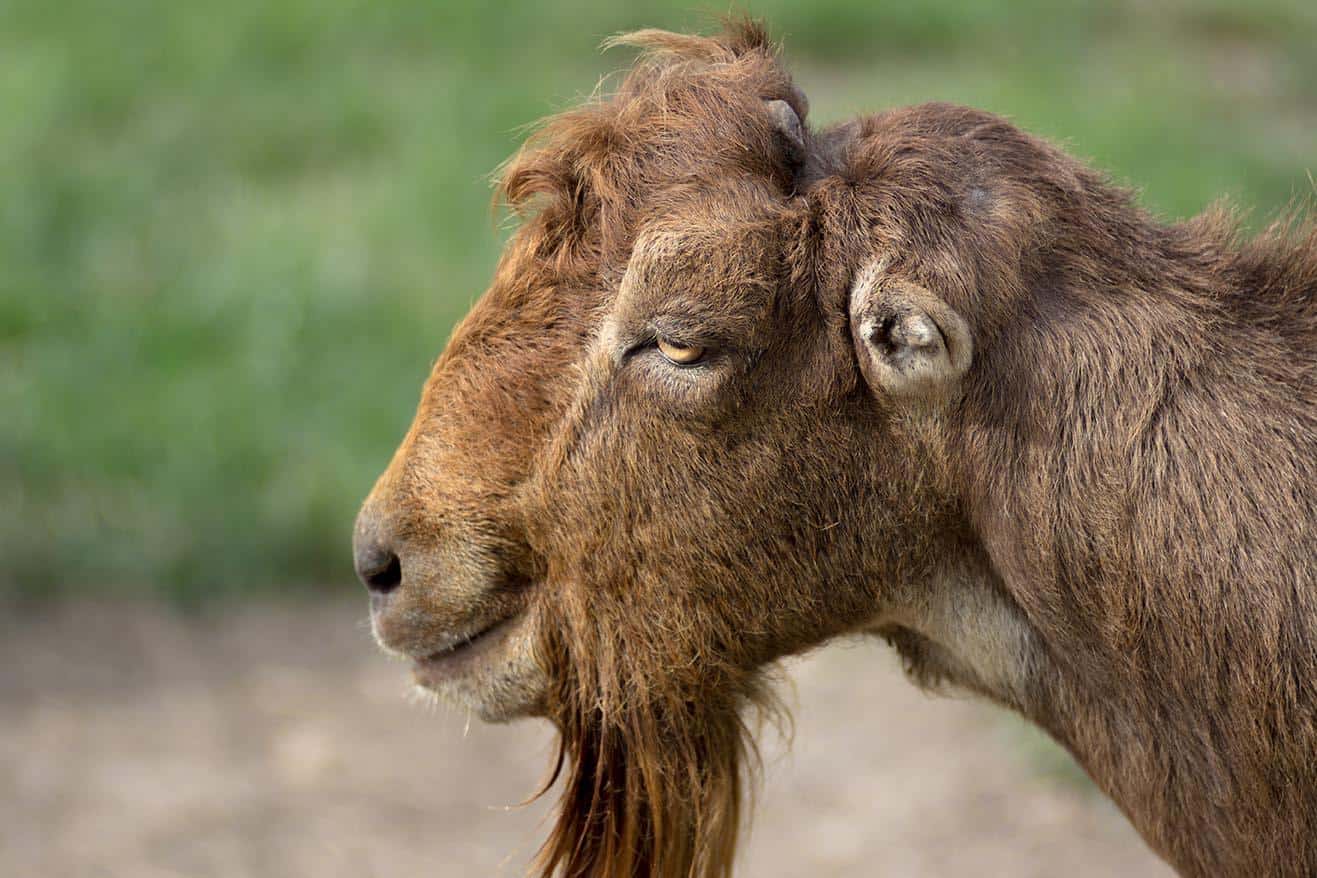If you are considering getting a good dairy goat, look no further than the LaMancha. Due to their Spanish-sounding names, one could be forgiven for thinking that this breed has Spanish origins. In fact, LaManchas are American purebred goats bred for milk production.
Settle in as we lay out everything you need to know about this breed so you can determine whether it is the right one for you.

Quick Facts about the LaMancha
| Species Name: | Capra aegagrus hircus |
| Family: | Bovidae |
| Care Level: | Easy |
| Temperature: | Versatile |
| Temperament: | Docile |
| Color Form: | Any color occurring in goats |
| Lifespan: | 7-10 years |
| Size: | Up to 130 pounds |
| Diet: | Herbivorous |
LaMancha Goat Overview
The LaMancha is arguably one of the most popular dairy goat breeds in the world. This is because it is not only a prolific milk producer but also has a high amount of butterfat in its milk.
Like all other domestic goats, the LaMancha comes from the Capra genus. First bred in Oregon, this breed sports a distinct pair of short ears, which makes it easy to distinguish from other goat breeds. This goat became recognized as a distinct breed in the 1950s.
Another reason behind the LaMancha’s popularity is their hardiness. These goats can adapt to just about any environment. To top it off, they have a docile temperament. Some people even keep them as pets.
How Much Do LaMancha Goats Cost?
As with any other breed, the price of a LaMancha depends on factors such as availability, the quality of parentage, and the breeder. A quality LaMancha buck can cost anywhere between $400 and $600.


Typical Behavior & Temperament
The LaMancha’s temperament is what makes it one of the best dairy goat breeds out there. These animals are easy to handle, and when well socialized, are capable of showing affection. Their docile and curious nature also makes them a good fit for people looking for a pet goat.
LaManchas also have a propensity towards curiosity and cleverness. Thanks to their intelligence, it is crucial that you have a fence that is strong and high enough to keep them put.
Appearance & Varieties
As mentioned, the most distinctive characteristic about LaManchas is their short ears, known as elfin style or gopher ears.
To be given the ‘gopher ear’ label, the ear should measure about an inch while having little to no cartilage. Additionally, the ear’s edge should be turned either up or down. A LaMancha buck must meet this qualification to be eligible for registration.
Elf ears, on the other hand, can measure up to 2 inches. Additionally, they should also curve up or down.
When it comes to size, a mature buck must weigh at least 155 pounds while standing at least 30 inches at the withers for it to be considered a true LaMancha. Does, on the other hand, should weigh at least 130 pounds and measure at least 28 inches at the withers.
This breed comes in a wide array of colors. However, their coats are typically short and sleek. LaManchas are also renowned for having good udder attachments, strong legs, and straight backs.


How to Take Care of LaMancha Goats
Even by goat standards, LaManchas are exceptionally agile. Couple that with their intelligence and curiosity, and putting a fence for this breed can prove to be quite a challenge.
A good fence should not only keep your livestock in but also prevent predators from gaining access into the pen. It is for that reason, therefore, that experts recommend installing fences that are at least 5 feet high.
When it comes to fencing material, wire fences tend to be the most effective. This is because wire is a tough material, capable of withstanding constant chewing and leaning.
Do LaMancha Goats Get Along with Other Pets?
As mentioned, LaManchas have a docile temperament, meaning that they are not likely to cause any trouble. As such, they can live harmoniously with almost any other animal, as long as that animal does not see your goat as potential prey.

What to Feed Your LaMancha Goat
For starters, make sure that your LaManchas always have access to clean water, as these goats can drink up to 10 liters a day. Their water consumption goes even higher when they are producing milk.
It is important to ensure that they have access to feed as well as forage. Left to their own devices, LaManchas will happily feed on weeds, herbs, shrubs, and even tree leaves. Therefore, if it is within your means, allow them freedom of pasture, as it allows them to feed on what they love and get exercise simultaneously.
When it comes to feeds, alfalfa hay is considered the best for free feeding. This hay has a high calcium content, which is beneficial for making high-quality milk. However, since this type of hay tends to be pricey, some people prefer giving alfalfa pellets.
Supplements are also essential for the healthy development of LaMancha goats, especially considering that a natural pasture might lack some of the essential minerals these goats need.
However, as long as you supply your goats with quality feed, all you need to do is provide them with small amounts of trace minerals. But you must make sure that the mineral supplement is meant for goats or cattle. Refrain from giving supplements that are designed for sheep, as they lack copper. While copper is an essential mineral to goats and cows, it is toxic to sheep.
You can also supplement your LaMancha’s diet with fruits and vegetables.

Keeping Your LaMancha Goat Healthy
As mentioned, LaManchas are incredibly hardy. However, as with any other domestic breeds, they require periodic deworming and hoof trimming. Additionally, since their ears do not offer much protection from the elements, it is crucial to have them inspected routinely for signs of infection. Therefore, do not forget to schedule regular appointments with your local vet.
Breeding
LaManchas typically come into season during fall or winter. During this period, they are usually in heat for 1-2 days every 21 days until successful mating occurs.
After mating successfully, does go into a 155-day gestation period, after which they deliver either twins or triplets.
However, even though does can come into heat at 5 months old, you are advised to wait until they are at least 8 months old, when they are well developed to handle pregnancy and birth. You will know that a LaMancha doe is in heat when she displays the following signs:
- Swollen rear end
- Signs of discharge or mucus
- Unusual bleating
- A greater interest in bucks
Some breeders, however, choose the artificial insemination route. This is because it allows them full control over the breeding process.
Are LaMancha Goats Suitable for You?
This depends on your needs. If you are looking for a goat for dairy purposes, LaManchas are hard to beat. They also make great pets given their amiable disposition

Conclusion
When it comes to goats, it can be easy to assume that they are all the same. However, different breeds exist for a reason. The La Mancha breed is a great fit for those looking for a dairy goat that can withstand any kind of environment. They make great pets, too, thanks to their friendly demeanor and inquisitive nature.
Featured Image Credit: Merrimon Crawford, Shutterstock
